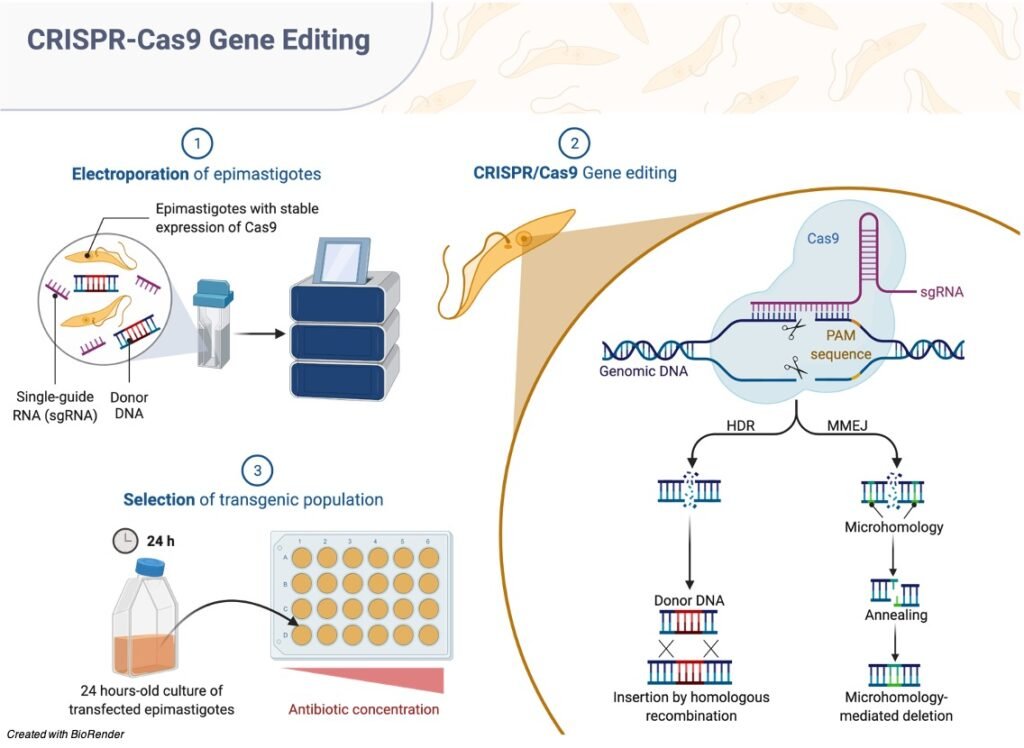Genome Editing: Good or Bad?
Jiankui Chinese specialist stunned mainstream researchers in 2018 in the wake of declaring he had effectively changed the genes of twin young ladies brought into the world in November to keep them from contracting HIV.
He had “secretly” coordinated an undertaking group that included unfamiliar staff and utilized “innovation of questionable security and adequacy” for unlawful human undeveloped organism gene-altering, specialists said.
However, such Genome Editingwork is prohibited in many nations, including China.
CRISPR-CAS9: a Wonderful Genome Editing Technology
CRISPR-CAS9 is an innovation that permits researchers to basically reorder DNA, raising any desire for genetic fixes for infection. Nonetheless, there are likewise worries about its security and morals.
CRISPR is a dynamic, flexible device that permits us to target almost any genomic area and conceivably fix broken genes.
It can eliminate, add or change explicit DNA arrangements in the genome of higher organic entities.
How does Genome Editing work?
Strange yet rehashed DNA structures that researchers had been noticing for quite a while were given a name. This name appointed was “Bunched consistently interspaced short palindromic rehashes” or CRISPR.
In 2012, researchers found that CRISPR is a critical piece of the “resistant framework”.
For example, when an infection enters a bacterium, it retaliates by cutting up the infection’s DNA. This kills the infection yet the bacterium stores a portion of the DNA.

The following time there is an attack, the bacterium creates a protein called Cas9 which matches the put away fingerprints with that of the trespassers.
In the event that it matches, Cas9 can cut the attacking DNA. The CRISPR-Cas9 Genome Editingapparatus along these lines has two segments.
They are: a short RNA grouping that can tie to a particular objective of the DNA and the Cas9 chemical which goes about as sub-atomic scissors to cut the DNA.
To alter a gene of interest, the short RNA arrangement that consummately coordinates with the DNA grouping that needs to be altered is presented.
When it ties to the DNA, the Cas9 protein cuts the DNA at the designated area where the RNA grouping is bound.
When the DNA is cut, the normal DNA fix instrument is used to add or eliminate genetic material or make changes to the DNA.
Benefits of Genome Editing
CRISPR could be utilized to change sickness causing genes in undeveloped organisms brought to term, eliminating the flawed content from the genetic code of that individual’s future relatives too.
Genome altering (Genome Editing) might actually diminish, or even dispense with, the rate of numerous genuine genetic infections, lessening human experiencing around the world.
It may likewise be feasible to introduce genes that offer deep rooted insurance against disease.
CRISPR May Prove Useful in De-Extinction Efforts. For instance, Researchers are utilizing the incredible a Genome Editingdevice to reproduce the wooly mammoth.
CRISPR Could Create New, Healthier Foods: In horticultural yields, Crispr can possibly affect yield, infection obstruction, taste, and different characteristics.
Hardly any analyses have been finished. In the event that effective it can assist us with destroying the issue of yearning and lack of healthy sustenance.
Cons of Genome Editing
Rolling out irreversible improvements to each cell in the assortments of future youngsters and every one of their relatives would establish remarkably hazardous human experimentation.
There are issues including askew transformations (inadvertent alters to the genome), persevering altering impacts, genetic instruments in early stage and fetal turn of events, and longer-term wellbeing what’s more, security results.
Modifying one gene could have unanticipated and far and wide consequences for different pieces of the genome, which would then be passed down to people in the future.
Many believe genome changes to be exploitative, upholding that nature ought to be left to run its own course. Scarcely any contend that subsequent to allowing human germline Genome Editing under any circumstance would almost certainly prompt its obliviousness of as far as possible, to the rise of market-based selective breeding that would compound previously existing segregation, imbalance, and struggle.
It will end up being an instrument for choosing wanted attributes like knowledge and engaging quality.
It can likewise be utilized to dispense with risky types of bugs and not many trials are being conveyed out on mosquitoes however taking out an animal types, even one that doesn’t seem to have much biological esteem, could agitate the cautious equilibrium of environments.
That could have unfortunate results, such as upsetting the food web or expanding the danger that sicknesses like jungle fever could be spread by various species totally.
Current logical progressions show that CRISPR isn’t just an amazingly flexible innovation, it’s demonstrating to be precise and progressively protected to utilize.
In any case, a great deal of progress actually must be made; we are simply starting to see the maximum capacity of genome-altering apparatuses like CRISPR-Cas9.
Mechanical and moral obstacles actually stand among us and a future in which we feed the planet with designed food, dispose of genetic issues, or resurrect wiped out creature species.
CRISPR methodological enhancements incorporate treating cells with little molecules during altering to prod DSB fix away from NHEJ and toward HDR.
Controllable frameworks switch on Cas9 utilizing light or little particles, restricting its movement to decrease askew impacts.
Specialists are scouring the microbial world for new Cas-type compounds and altogether new genome-altering frameworks. “We’re actually distinguishing new particles with altering limit and we don’t completely comprehend the altering instruments we have,” Hennebold says. “We actually have a long way to go.”
The act of utilizing CRISPR to address illness causing changes is developing: Editas Medicine and Allergan declared human in vivo CRISPR-treatment preliminaries for an acquired visual impairment.
A likely obstacle to restorative CRISPR is the chance of human resistant reactions to its bacterial segments.
For example, a larger part of tried blood tests showed existing invulnerable reactions to Cas9, which is regularly taken from Staphylococcus or Streptococcus microorganisms.
Starting at 2012 productive genome altering had been created for a wide scope of test frameworks going from plants to creatures, regularly past clinical premium, and was turning into a standard trial system in research labs.
The new age of rodent, zebrafish, maize and tobacco ZFN-intervened freaks and the upgrades in TALEN-based methodologies vouch for the meaning of the strategies, and the rundown is growing quickly.
Genome altering with designed nucleases will probably add to numerous fields of life sciences from examining quality capacities in plants and creatures to quality treatment in people.
For example, the field of manufactured science which expects to design cells and creatures to perform novel capacities, is probably going to profit with the capacity of designed nuclease to add or eliminate genomic components and subsequently make complex frameworks.
Likewise, quality capacities can be contemplated utilizing immature microorganisms with designed nucleases.
Recorded underneath are some particular assignments this strategy can do:
• Designated quality change in Gene
• Gene treatment
• Making chromosome adjustment
• Study quality capacity with undifferentiated organisms
• Transgenic creatures
• Endogenous quality marking
• Designated transgene expansion
Designated quality change in creatures: The blend of ongoing disclosures in hereditary designing, especially quality altering and the most recent improvement in ox-like multiplication innovations (for example in vitro undeveloped organism culture) takes into consideration genome altering straightforwardly in prepared oocytes utilizing engineered exceptionally explicit endonucleases.
RNA-directed endonucleases: clustered routinely interspaced short palindromic rehashes related Cas9 (CRISPR/Cas9) are another instrument, further expanding the scope of strategies accessible.
Specifically, CRISPR/Cas9 designed endonucleases permits the utilization of various aide RNAs for synchronous Knockouts (KO) in one stage by cytoplasmic direct infusion (CDI) on mammalian zygotes.
Genome Editing Citations
- Genome Editing: Past, Present, and Future. Yale J Biol Med . 2017 Dec 19;90(4):653-659.
- The CRISPR tool kit for genome editing and beyond. Nat Commun . 2018 May 15;9(1):1911.
- A glance at genome editing with CRISPR-Cas9 technology. Curr Genet . 2020 Jun;66(3):447-462.
- CRISPR/Cas Genome Editing and Precision Plant Breeding in Agriculture. Annu Rev Plant Biol . 2019 Apr 29;70:667-697.
- The promise and challenge of therapeutic genome editing. Nature . 2020 Feb;578(7794):229-236.
Share












